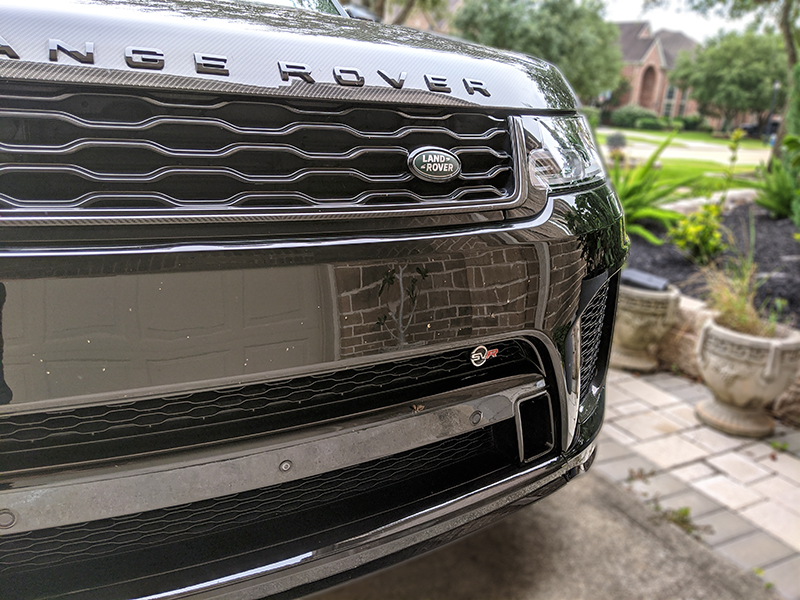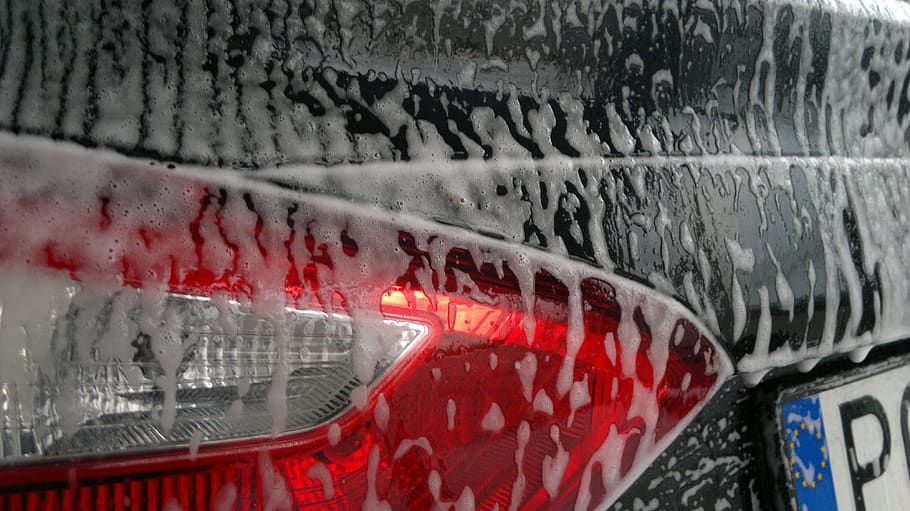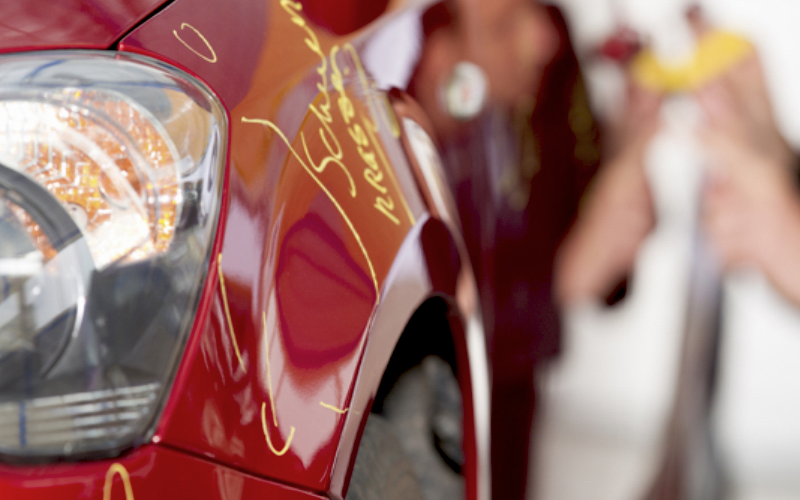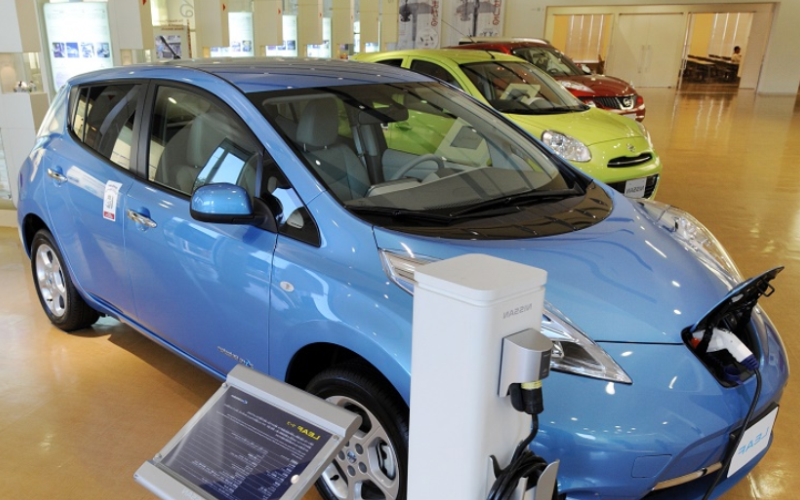Imagine going on a highway at high speed and suddenly you see that familiar splatter on your windscreen. A bug crashes on to your windshield and spills its guts out. This is a very common occurrence especially in the Southern states like Texas, New Mexico and Florida. But the good news is that the bug splatters on glass surfaces can be removed comparatively easily but when the same bugs or insects crash on the body of your car, the damage to the paint job is much more significant and takes a heavy toll on the value and appearance of your car. Although as subsequently explained you can use some tricks in the bag to get rid of persistent stains of bug guts on your car, if these manage to linger on there for longer periods of time, it might get pretty difficult to get rid of them.
Due to these bugs highway drivers usually take a sigh of relief at approaching winter because summer is that part of the year when these flying insects and bugs swarm the speeding cards on highways. These kamikaze suicide attacs by these poor bugs leave them dead and cause more pain for the drivers because now they have to deal with these hard-to-get-rid-of bug innards which are stuck all over the front and side of their automobile.
What are These Bug Guts?
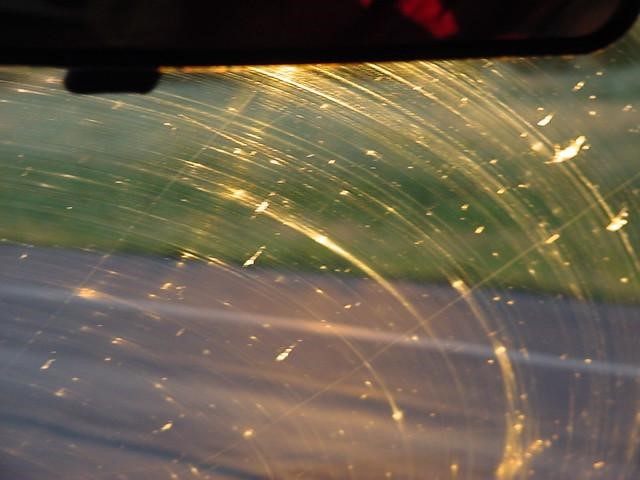
So what causes these bug splatters in the first place? First off, not all bug splatters are the same. Different bugs are native to different parts and it would take an entomologist to describe what specific bug ran into your car. But whatever insect it is, be a wasp, a fly, a bee or maybe a moth when they splash into your car, the impact causes them to burst into a fluid like form and it gets stuck to your car. Now obviously there are many enzymes and other acidic juices inside the bodies of these bugs which stick to the body of the car and after some time, these acids leave permanent stains as the acid etches into the paint job of the car.
In Southern states the bugs are usually different butterfly species like (Libyetheana carinenta) and love bugs like (Plecia nearctica) . These bugs have migration periods which usually fall around spring and late summer. So if you are driving through a highway during these time periods you are more likely to have insect innards splattered all over the exterior of your car.
Now, there might be some steps you can take to lessen the impact and diminish the chances of having bug gut stains on your car. But before digging into that it would be better to examine how these bug guts cause these problems for the drivers and how it causes significant damage to your car in terms of value and aesthetic pleasure.
We all love our cars and hold them very close to our heart so it is heart rending to see bug-splat all over the front of our cars. But why do the insects leave such resistant stains?
- Bug guts appear as in the form of a splash if this was a big insect which ran into your car. If it is a small bug, these kinds of bugs usually leave dotted marks on the body of the car. Whatever the case might be, these marks are hideous and we want to get rid of them however possible.
- Apart from the short term effect of unappealing look of the car there is another more serious and lasting effect. The paint on your car is destroyed.
- Also these bugs might cause a chip in your car which just adds insult to the injury.
- These bugs can sift through the grill and get stuck into the radiator. At best it might cause troubling noise from the radiator and at worst it might cause a block in the air flow and ultimately a failure of the air conditioning system of the car.
Protective Strategies against Bugs
Now the first approach to shield your car from these bug gut stains would be to proactively take precautionary measures to ensure that these bugs do not bump right into the body of the car. There are a lot of strategies towards this approach.

Using a Quality Wax
There are different kinds of waxes available in the market which you can use to coat the surface of your car. You can get the wax job done at a repair shop by a professional but since they are not that difficult to apply, it might not be a mammoth task to do it at home with the help of some tutorials. These waxes perform the protective duty because of their innate characteristics of being slippery, non-sticky and shiny.
- They are slippery, which means that when a bug crashes into your car it would have to face much harder time to stick to the body of your car. Instead it is much more probable that it will slide off your car on its own, sparing your car of any stains on the body.
- The acids from the insect won’t be able to damage the body of the car because of the protective wax which completely covers it
- Even if the bug innards manage to stick on your car, they would be easily removable with the help of a sponge and some lukewarm water.
Using a Paint Sealant
The paint sealants perform in a way which is very similar to that of wax. Technically they are polymer based which performs significantly better than their carnauba-based counterparts. Since paint sealants are especially lab-designed to do this, they provide lasting durability as well as a much more beautiful shine. Additionally, paint sealants offer protection against other kinds of harmful irritants which include tree sap, bird poop and occasionally UV rays as well.
Applying a Windshield Sealant to the Windshield
Windshield sealants are transparent sealants for protection against bug guts spills on the windscreen. They improve the driving experience as the insects’ innards either do not stick to the windshield at all or even if they manage to do so, they can be swiped off by a spray and windscreen wiper.
A Ceramic Coat
A ceramic coat might be a more permanent solution to this problem of bug guts on the surface of your car. A good ceramic coat, with proper maintenance, lasts anywhere from 2 to 5 years so that means that it is probably more durable than the former two approaches to shield your car from the bug gut spills.
Installing a Paint Protection Film
Paint protection film is very light, sometimes transparent but not necessarily so, sheet which you can fit on the front end of the car. Usually it protects the front bumper area of the car. It is a cheaper option and protects the paint of the car from any lasting damage. However, there are a couple of downsides to it. First off, it is not very durable which means that you would need to get it replaced after a while. Also if large-sized insects are the root cause of your problem with the bug guts, then this is not the best option for you. It does not increase the shine or luster of the car but does what it is supposed to do-” protect the car from insect stains”.
Using a Bug Deflector
There are lots of bug deflectors which you can install on the front end of the hood of your car. They work by altering the aerodynamic of your car. Although this might not be a fool-proof option but it is still a worth a try especially if you own an SUV because these deflectors are most popular for SUVs. You can find one which is specific to your car’s make and model but if you don’t, there are a lot of vendors which can make you a custom one for your car.
Insect Repellent Spray
Insect repellent spray is also a popular option when it comes to shielding your car against bug guts. They are easily available at the local car maintenance stores and you should choose the one which suits your car well. There are some concerns about using these directly on your car but using these sprays on the windscreen is definitely safe. Just spray this on the windshield like you would do with a regular glass cleaner and you are good to go.
Removing Bug Guts from the Cars
Microfiber Towel and Quick Detailer
Microfiber towels are very popular because they are cheap and readily available.
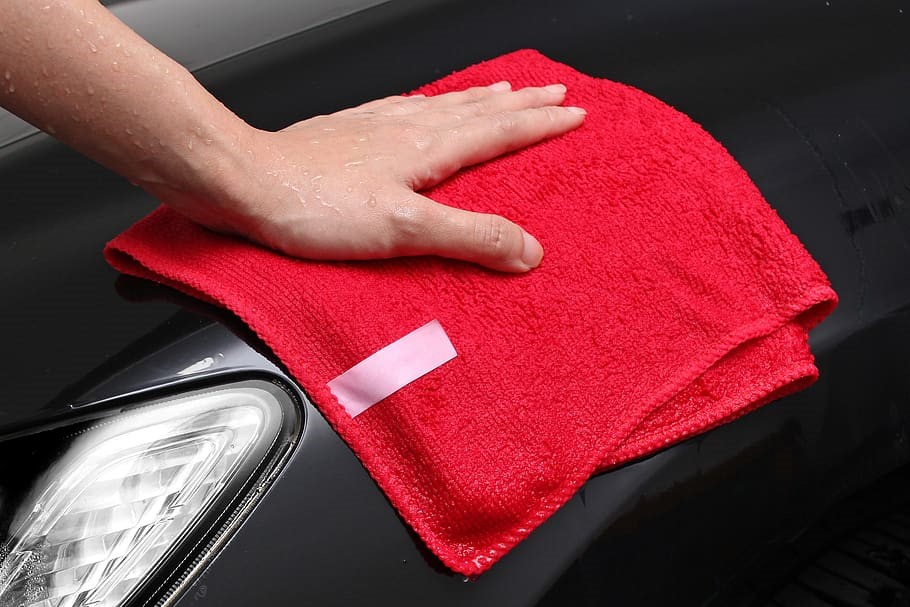
You can judge the quality of a microfiber cloth by holding it up in front of sunlight. If the sunlight manges to sift through, then it means that it is not well-knit and it is not of great quality. However if it blocks the sunlight, then it means you should have no problem using it.
Using a microfiber towel instead of a regular old piece of cloth can be a great idea as it clears off dust more efficiently while ensuring that it doesn’t leave off any scratches on the surface of your car. They work miraculously well when used immediately after the bug guts are scattered all over the surface of your car. Even if you are using it after some time make sure you apply some sort of surface cleaner to it and you should be good to go.
There are a lot of surface cleaners available which you can use to wipe off the innards of insects which bump into your car but quick detailers are the most popular ones currently available. A lot of brands have their own quick detailers which have similar levels of performance, so it does not make much of a difference whichever one you opt for. They come in handy spray bottles which you can use to spray on the microfiber cloth and then use that microfiber cloth to wipe off the stains.
Although, they have an all-round performance but still you should try separate ones for the metallic surface of the car and the windshields because the former can withstand a rougher cloth but the later would get scratched far easily.
These days you can get special gloves which are like oven-gloves but are coated on the exterior by a microfiber cloth. This makes the job additionally easy and you should not face a lot of difficulty scraping off the bug splats from the surface of your car.
Specialized Bug-Removal Products
The microfiber cloth with Quick Detailer, is a more general approach to get rid of the bug guts from your car. A more bug-specific approach would be to use one of the bug removal products which are available on the market to remove persistent insect guts. There are a lot of such products available online. The way these typically work is that they have strong anti-microbial properties. So these anti-bug products dissolve the innards of the poor bug which crashed on your car. Once dissolved it can be easily wiped off with the help of a sponge or a microfiber towel. Although this approach sounds great and sometimes works as fine too, the drawback is that these products can sometimes fade the paint of your car.
Some of them are retailed in the market as concentrates so it is best advised that they are diluted with water before usage. Still others would be available in ready-to-use preparations which can be applied directly to the car. Try to get your hands on a non-toxic and biodegradable bug-removal spray without petroleum distillates.
Although these products are generally safe to use, you should try rubbing not too hard or there is a chance that you might scrape off the underlying paint.
Degreasers
Citrus based degreasers are very popular these days. They also have similar mechanism of action to that of other bug removal products. They are enzyme based and dissolve the bug innards into a fluid with paste like consistency which can be removed easily. They are usually retailed as bug and tar removers so it means these products can remove both. The only precaution which you might want to take is that these degreasers should not be left on the surface of the car for very long. As soon as they do their job, use a quick microfiber towel to remove the residue.
There are multiple variants of these citrus based degreasers. Try going for the one which is specialized for automotive. They are usually, but not necessarily, petroleum based so additional care should be taken before applying it to the surface of a very hot car especially while applying it on the hood of the car after a long journey. They come in aerosol form sealed in a container so are much easier to use as well.
Using an Anti-Bug Sponge
A lot of car washing sponges are marketed as bug removal sponges. But you need to be extra careful when choosing a sponge for your car, and using it as such without any lubricant. Usually what happens is that the bug innards get stuck to the surface and when you try to wipe it off with a regular sponge the wings and other parts of the insect might leave marks on the surface.
What should you do to get around this problem then?
- Try using a sponge which is specialised to remove bug splatter from the surface of your car. Regular sponges are not specialized to remove these bugs and increase the chance of leaving the scratches.
- Additionally, it would be great if you can use a bug removal product in conjunction with these sponges as they provide the lubricant action and it becomes subsequently easy to remove the remnants from the surface of the car.
Washing your Car with a Hose
What can go wrong if you try to clean off your car using a high powered water jet? Actually a lot can. First off water can definitely be of some use to remove bug splats especially when they are fresh. Once they dry off it is much harder to remove them. But even if they are fresh marks, water does not give 100 % results. Secondly using high speed water from a jet nozzle might do more harm than good. It might chip your car.
On the bright side if you do not have any other supplies available then water at least does enough to improve the situation and afterall something is still better than nothing. If you have your regular car washing solution which you use to clean off your car, you can use that in synergy with water.
WD-40
This product is famous probably all over the world for its multi-facet car care properties. You can use it to remove a number of things from the surface of the car ranging from simple dust marks to rust stains and tar remnants. It comes in aerosol form in a sealed container. Just spray it over the desired area from where you want to remove the bug remnants and then sit back and relax for 5 minutes. Just as the timer announces that 5 minutes have lapsed you can wipe it off the surface of your car using a microfiber towel and you should have a shining car surface. Additionally, if you wish, you can clean the car afterwards with plain water and apply wax to the surface for additional finish and shine.
Diesel
Now we have reached that part of the list where we recommend things only as last resort. Diesel and even petrol are famous for their cleaning properties. Now we are not saying that you can not use them but you should only go for these if you do not have any other car-care products available. They are notorious for fading the paint on the car and quality of petroleum based products varies from place to place. Therefore, it might take a toll on the quality of your car. Nonetheless these products do the job if used with caution. We still strongly suggest restricting the use of these petrol based products in your cars and not on them.
Baking Soda Solution
Baking soda works surprisingly well for the glass surfaces and you should not have much difficulty trying to remove bug stains using baking soda solution on your windshield. Use a bucket and add water to it now dissolve some baking soda in it and apply this preparation with the help of a microfiber cloth or an anti-bug on the surface of the car where there are bug guts attached to the body of the car. When it comes to a car’s metal surface, strong solutions of baking soda might be corrosive to the underlying metal body and just like diesel based products we suggest that you opt for baking soda only if you do not have any other options at your disposal.
Conclusion
We know bug splats on the windshield can be a real headache if you are driving down a peaceful road on a sunny day in the South and they spoil the fun of driving. Moreover, they can be the cause of many accidents if a swarm of locust or other insects attack your car. Thus we have listed all the possible options you can explore. This problem is typically more troublesome during summer time. As a protective strategy the first approach should be to ward off insects by using insect repellent techniques which are listed above. If that approach does not bring desired results, then we have also listed a number of strategies to get your car rid of the carcass of the poor deceased bugs.
Hopefully these techniques will help you with a safe journey and will certainly improve your driving experience.
